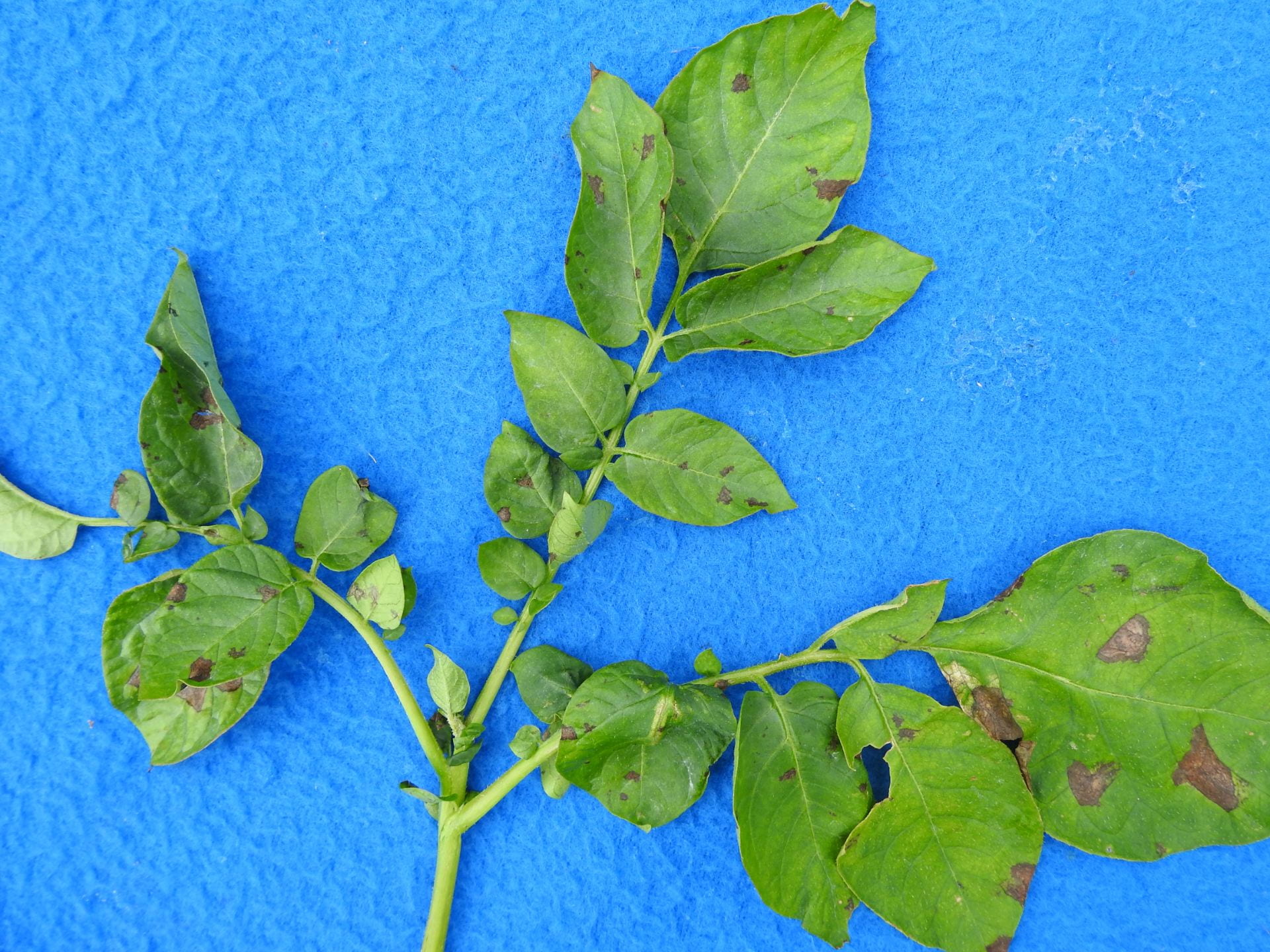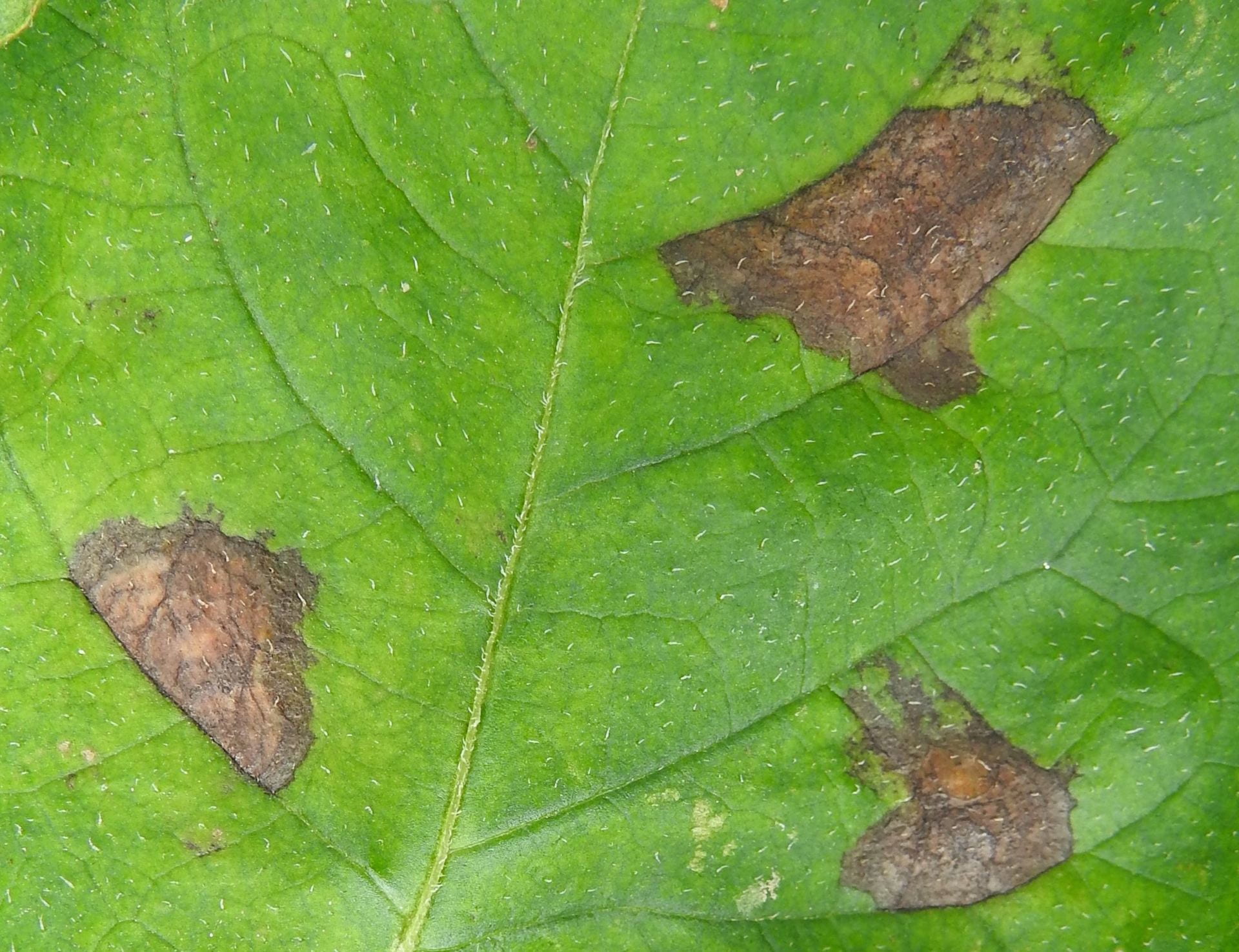Early blight occurs sporadically on Long Island at least partly because conditions typically are not favorable when plants are most susceptible. Also, the pathogen may not be present in all potato plantings. This disease is more common elsewhere in the northeast.
Early blight usually develops when plants are starting to decline due to age, stress, or low fertility. Favorable conditions are long periods of leaf wetness and/or high humid (above 96%) occurring overnight when temperatures are cool (in the 60s and 70s), especially when followed by dry days, which promote dispersal of spores that were produced under moist conditions. Favorable conditions sometimes occur during June on Long Island, which is when potato plants typically are growing well. But often conditions are dry during June. And it is usually hot and dry during July and August when plants become more susceptible. Conditions often were favorable (leaves wet for many hours when cool) over night during June in 2017 and 2018 before early blight symptoms were seen in late June to early July.
Brown to black spots develop on leaves. As they enlarge they often develop concentric rings giving the spot a target appearance, and a yellow border may develop. Leaves low in the canopy tend to be affected first. Early blight can vary in severity throughout a planting, but there will not be individual plants with several affected leaves surrounded by plants with no symptoms as can occur with TSWV, which also causes leaf spots with concentric rings.
The pathogen can survive in debris and soil. This is considered the most important source of the pathogen. It may be present in previous potato crops but not developing to a noticeable level as it remained on leaves low in the canopy. Wind-dispersed spores from infected plants in another planting can also be the source. The spores are larger and so heavier than those produced by powdery and downy mildew pathogens and thus do not as readily move long distances.
It is important to know where early blight is developing as it will be important to minimize tuber decay from infection at harvest by delaying harvest after vine death to promote skin set and minimizing bruising during harvest. Additionally, incorporate crop debris as soon as possible after harvest and rotate land where potatoes are grown to allow infested debris to breakdown thereby reducing amount of viable inoculum for future crops. Manage volunteer potatoes and Solanaceous weeds during the rotation period as they can harbor the pathogen.
Fungicides for commercial production. Inspire Super is considered a top choice when early blight in confirmed in a planting and conditions are favorable. Several other fungicides are labeled and are good choices to use especially in rotation with Inspire Super: Endura (FRAC code 7), Scala (9), Quash (3), Rovral (2), and QoI fungicides (11). Protectant fungicides include chlorothalonil and mancozeb.
Please Note: Fungicides mentioned are for use in commercial production, not gardens. The specific directions on pesticide labels must be adhered to — they supersede these recommendations if there is a conflict. Any reference to commercial products, trade or brand names, is for information only; no endorsement is intended. For up-to-date information on labeled conventional fungicides see Cornell Integrated Crop and Pest Management Guidelines for Commercial Vegetable Production and biopesticides see the Biopesticides website.





